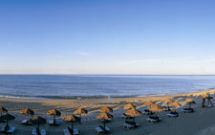Street Art Itinerary
Art itinerary to celebrate April
Murals are artistic manifestations that represent true windows into the history and identity of Portugal. Throughout the country, each work invites visitors to learn about the Revolution of 25 April 1974 through art, exploring cultural and tourist heritage.
Urban art has always been a mirror of the times and with the celebration of the 50th anniversary of the 25th of April, cities gain new colours to remember and celebrate history. If revolutionary murals once served to affirm newly-won freedom, today they continue to be a powerful artistic manifestation connecting past and present.
After the Revolution, murals emerged as a form of collective expression, loaded with symbolism and messages of resistance. Five decades later, art returns to the streets with new languages and the same commitment: celebrating democracy.
One example is the Murals of Freedom project, which invites you on an artistic journey that showcases the theme of the Revolution in 14 locations across the country. Each mural tells a story, through the faces of essential figures such as Captain Salgueiro Maia and musician Zeca Afonso, and also through symbols, such as red carnations. There are cities that call for a stop for a broader artistic panorama. These include Faro, in the Algarve, during the Festival F, or Ponta Delgada, in the Azores, which invites you to an immersive dive into creativity with the Walk&Talk — Arts Biennial.
If you enjoy discovering cities through their art, this route will take you to murals that pay tribute to the 25th of April.
PORTO AND THE NORTH
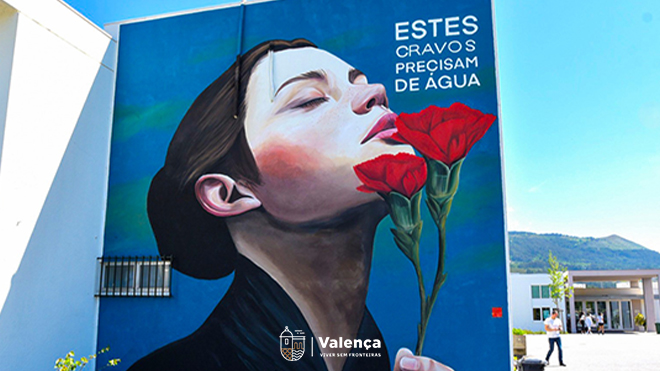
In Valença, the Urban Public Art Circuit, dedicated to the 50th anniversary of the 25th of April, has transformed the city into an open-air museum. The murals and interactive installations dotted around this unique city invite reflection on freedom and participation, while also embellishing the historic centre.
Enjoy the perfect combination of contemporary art and the grandeur of Valença Fortress, which towers over the landscape. Each work on the circuit offers a new perspective, making the city a perfect destination for those who appreciate outdoor art. Discover the traditions and explore local crafts and typical products, celebrating the city's cultural heritage.
Valença is the perfect destination for those looking for an authentic experience, where art, history and tradition meet on every street and in every corner of the city.
LISBOA
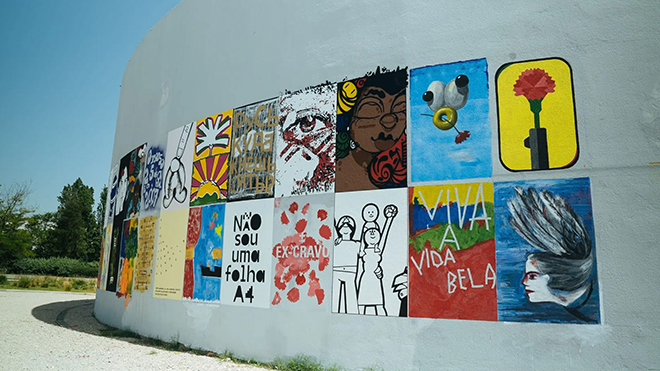
Lisbon, Almada and Setúbal became living canvases with murals celebrating the Revolution and Freedom.
Lisbon is a city where history was written on the streets. In the Belém neighbourhood, visit the MAAT – Museum of Art, Architecture and Technology, where contemporary art and design challenge the limits of creativity. In the gardens, the collective mural "48 Artists, 48 Years of Freedom" reinterpreted, in 2022, the iconic Mercado do Povo (People’s Market) Panel from 1974. The work was created by some of the artists who participated in the original version, including Teresa Magalhães and Guilherme Parente, and by new creators, such as Vhils, Joana Vasconcelos and Maria Imaginário, reflecting the diversity of contemporary Portuguese art. Admire more urban art in the waterfront area, including the Bordalo II panel at the Belem Cultural Centre or the murals in Alcântara or at the Santos train station.
In turn, the "5 Decades, 5 Artists, 5 Murals" initiative spreads different visions of freedom throughout the city, creating a route that invites discovery and reflection. Each mural tells a unique story: in Campolide, the Revolution is relived with striking scenes from the day that changed Portugal; near the São Jorge Castle, on Rua Costa do Castelo, resistance and the role of theatre take shape on the wall, in a mural by Kruella D'Enfer; and on Rua dos Caminhos de Ferro, in Santa Apolónia, a canvas in shades of pink and blue, produced by Arisca, highlights a symbolism of Equality and Wisdom.
If you find yourself on Avenida de Berna, near the Calouste Gulbenkian Foundation, take a look at the mural that pays yet another tribute to Captain Salgueiro Maia and also highlights the role of women in the liberation movements of the former Portuguese colonies. Originally made in 2014 by Vhils, Miguel Januário (+maismenos+), Frederico Draw, Diogo Machado (Add Fuel) and Gonçalo Ribeiro (Mar), it was recently renewed by four artists: Tamara Alves, Sara Fonseca da Graça (Petra Preta), Moami and Mariana Malhão.
Another project worth highlighting is the mural "1,500 Tiles to Celebrate 50 Years of April”, coordinated by Miguel Januário (+maismenos+). Hundreds of people were involved in the creation of this idea, which is divided between Lisbon and Porto, using the tradition of tiles to symbolise a democratic future still under construction.
For those who appreciate the connection between tradition and contemporary art, it is worth visiting the National Tile Museum, where Portuguese tiles gain new interpretations, and discovering other examples of urban art in Xabregas and Marvila, where the vibrant culture is revealed at the Iminente Festival.
In Almada, the "Tell Me Stories" project, developed by the Artistic Centre A Casa ao Lado, unites generations through mural art. Young artists were inspired by stories from those who lived through the 25th of April, transforming the streets into an open-air exhibition. Take the opportunity to explore the murals dotted around the city centre, where several artists have left their mark. For a more experimental look, Casa da Cerca - Contemporary Art Centre is a must-see.
In Setúbal, the initiative "Stories That the Walls Tell – 50 Years of Muralism", coordinated by Chilean Alejandro "Mono" González, brought together artists from different generations around a mural that came to life as creativity and inspiration flowed. A project that reflected the evolution of muralism as a political and artistic tool. Those who want to delve even deeper into the local artistic identity can visit the Setúbal Casa da Cultura (House of Culture), where temporary exhibitions explore new visual languages.
Whether in Lisbon, Almada or Setúbal, the April murals have transformed the cities into spaces of memory and creativity.
ALENTEJO

If you are looking for destinations where history meets artistic expression, the Alentejo region has several must-see stops.
In Estremoz, the combination of historical memory and local identity is revealed in the commemorative mural next to Parque da Porta de Santa Catarina. Created by artists Davide Alves and Miguel Gustavo, the work highlights the city's role in the Carnation Revolution, paying tribute to Cavalry Regiment No. 3 (RC3) and two local figures: Captain Andrade de Moura and Sergeant Brás. The city is known for its traditional clay dolls, classified as UNESCO Intangible Cultural Heritage. Examples can be seen at the Interpretation Centre. And be sure to visit the well-preserved historic centre and the Berardo Estremoz Museum, where art and tradition are valued.
Farther north, in Nisa, art takes on other forms of expression through the reinterpretation of local traditions. Rua de Santa Maria has been transformed into a contemporary canvas, with the decoration of the facades and pavements having been inspired by typical embroidery and lace. The geometric and floral motifs, characteristic of the town’s stone pottery, create a unique visual path that enhances its heritage. Also in Nisa you can admire the “Valquíria Enxoval”, a textile installation by artist Joana Vasconcelos, which celebrates craftsmanship through a piece of great visual impact.
The murals celebrating the 50th anniversary of the 25th of April have turned Portugal into an open-air gallery, where art and memory intertwine to tell the story of the Revolution. From North to South, from the islands to the mainland, each work reflects the country's identity and democratic spirit, giving voice to new generations of artists and reaffirming the role of urban art as a means of expression and reflection.
Celebrate freedom on a tour of colours, shapes and stories that mark the walls of Portuguese cities.


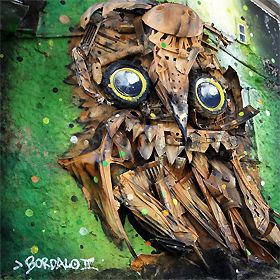
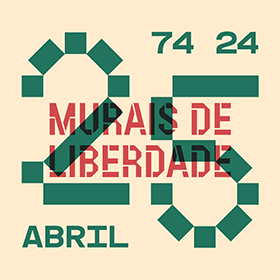


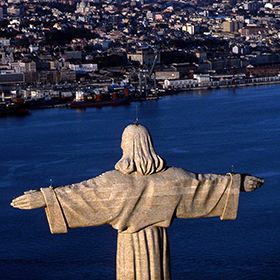
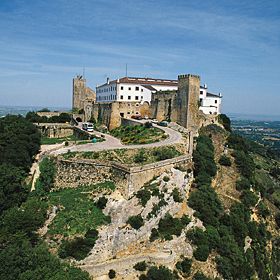


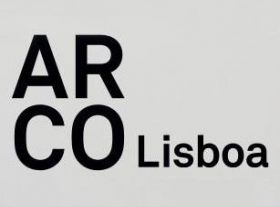
 Explore
Explore 
 Remember and Share
Remember and Share 

